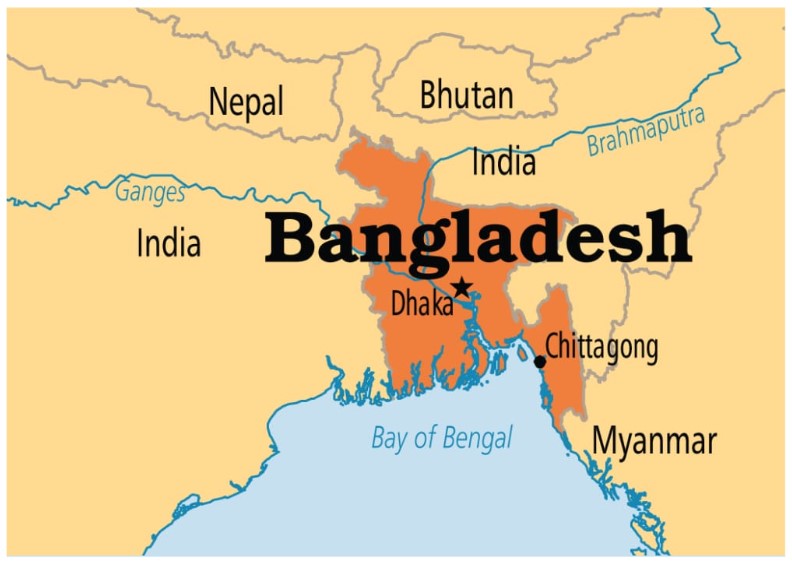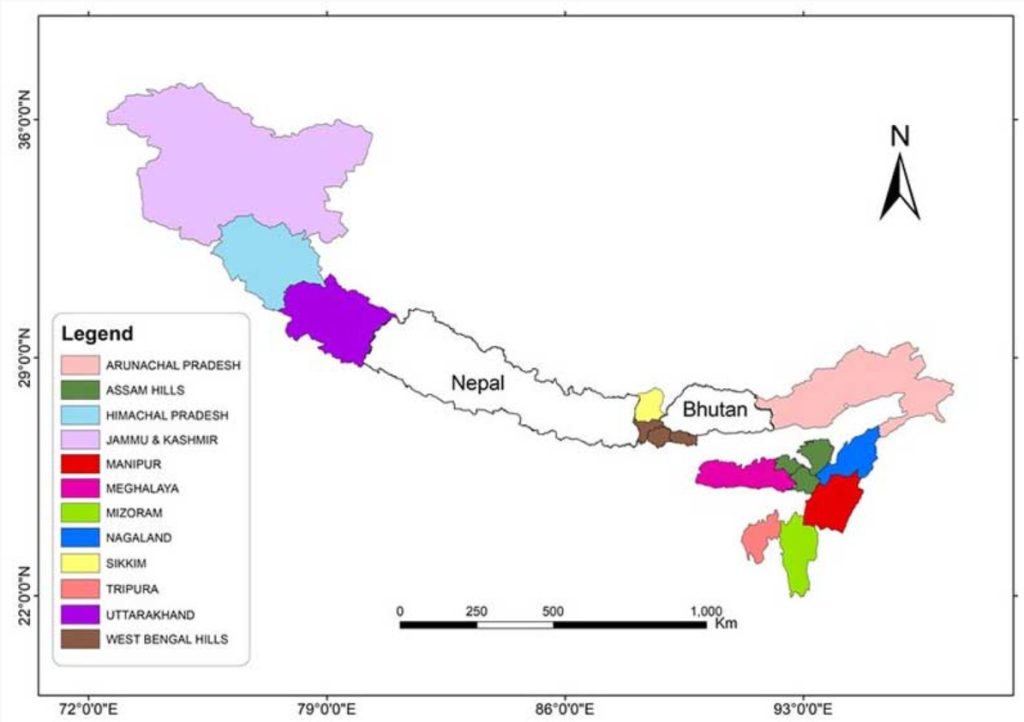CONTENTS
- Change in Bangladesh, the Challenges for India
- Why Himalayan Towns Need a Different Kind of Development
Change in Bangladesh, the Challenges for India
Context:
As events unfold rapidly in Bangladesh, it is also time to reflect on February 2009, when then-new Prime Minister Sheikh Hasina faced a significant crisis shortly after taking office. The mutiny of the Bangladesh Rifles (BDR), a paramilitary force, ultimately failed, as Sheikh Hasina had just ascended to power through “clean” elections, enjoying strong support from women and youth without military interference. However, over her 15-year tenure, much of this support seemed squandered.
Relevance:
GS2- India and its Neighborhood- Relations
Mains Question:
India can capitalise on its strong development partnership with Bangladesh and work closely with the interim government, the army, and the people. Discuss in the context of the recent events in Bangladesh. (15 Marks, 250 Words).

Growing Disconnect:
- A growing disconnect emerged with the 2024 elections, marked by the Opposition’s boycott, shrinking democratic space, erosion of human rights, economic downturn, and significant youth unemployment—a demographic that previously benefited from economic growth under Hasina.
- When student protests erupted, led by the Anti-Discrimination Student Movement, the government’s heavy-handed response, treating the protesters as enemies of the state and resorting to violence, marked a turning point for Hasina.
Change in the Army’s Alignment:
- Considering public opinion and challenges, Bangladesh Army chief General Waker-uz-Zaman has stepped into a situation distinct from the 2007 coup led by General Moeen U. Ahmed.
- Back then, the army’s intervention was necessary to curb anarchy and violence instigated by major political parties, restore governance, and facilitate elections.
- In 2024, the army is perceived as aligning with public sentiment by removing a beleaguered Prime Minister and reinstating democratic processes. This shift has made the army more vulnerable and responsive to public opinion.
Choice of the Head of the Interim Government:
- An indication of this vulnerability is the acceptance of Nobel laureate Muhammad Yunus as the head of the interim government chosen by the students.
- Typically, coup leaders appoint uninspiring technocrats to run the country under their strict control, rather than a popular leader who commands widespread respect both domestically and internationally. However, the army’s vulnerability may be the silver lining Bangladesh needs.
- Mr. Yunus is viewed as a strong advocate for democratic values and the rule of law. He has been critical of Hasina due to her treatment of him.
- While he once harbored political ambitions and wanted to form his own party, he is not aligned with the two main parties, the Awami League and the Bangladesh Nationalist Party. This situation might provide the opportunity he needs to establish a third force in Bangladesh.
Persisting Challenges:
- However, forming the interim government is not the only challenge at present. There is also the serious issue of the students’ movement being co-opted by those oppressed under the previous regime, those who boycotted the elections, or those who supported from abroad.
- These include not only the Bangladesh Nationalist Party and the opposition but also the banned Bangladesh Jamaat-e-Islami, which had instigated Islamic jihadist violence in 2006-07.
- Violence against Awami League supporters and their properties continues, and symbols of Bangladesh’s liberation, including statues of Sheikh Mujibur Rehman, are being destroyed, with the Hindu minority community under attack.
- Incorporating such polarized forces into the interim government will weaken both Mr. Yunus and the army, inevitably boosting anti-India elements.
Role of India:
- While India was the first country to highlight “contemporary forms of religiophobia against non-Abrahamic religions” in the United Nations Security Council in 2021 and in the UN General Assembly in 2022, it has hesitated to address this issue more assertively with its neighbors and the West, aside from the usual expressions of concern.
- Recent events in Bangladesh have demonstrated, once again, that if India does not take the lead, no one else will.
- Reflecting the situations in Myanmar and the Maldives, the events in Bangladesh are more similar to those in Myanmar than in Sri Lanka.
- After three consecutive elections in Myanmar, the coup leaders are struggling to maintain control over the people and ethnic groups, potentially facing collapse sooner rather than later.
- Similarly, after four consecutive elections in Bangladesh, where democratic aspirations have been heightened, the military will find its role significantly restricted.
Conclusion:
For India, the scenario resembles what happened in the Maldives, where it supported President Ibrahim Mohamed Solih without engaging with the opposition, leading to challenges when the opposition gained power. However, India’s advantage lies in its strong development partnerships and projects that benefit the people, whether in the Maldives, Afghanistan, Sri Lanka, or now in Bangladesh. India’s best strategy is to collaborate closely with Mr. Yunus, the military, and the people.
Why Himalayan Towns Need a Different Kind of Development
Context:
The Indian Himalayan Range (IHR), which includes 11 states and two Union Territories, experienced an urban growth rate exceeding 40% from 2011 to 2021. Towns have expanded, and new urban settlements are developing. However, urbanization in Himalayan towns requires a unique approach.
Relevance:
GS3- Conservation, Environmental Pollution and Degradation, Environmental Impact Assessment
Mains Question:
Cities along the Indian Himalayan Range suffer from inadequate funds and resources to manage civic issues. Analyse. What can be done to ensure better management of Himalayan areas? (15 Marks, 250 Words).

Challenges Faced by IHR Towns:
- Nearly all Himalayan towns, including state capitals, face significant challenges in managing civic issues.
- Cities like Srinagar, Guwahati, Shillong, and Shimla, along with smaller towns, struggle with sanitation, waste management, and water supply.
- The planning institutions in these states often fail because they rely on models designed for the plains, which have limited applicability in the Himalayas.
- City governments suffer from a shortage of human resources, with a deficit of nearly 75%. For example, in the Kashmir Valley, excluding the Srinagar Municipal Corporation, there are only 15 executive officers for over 40 urban local bodies.
- The expansion of cities into peripheral areas encroaches on village commons. Srinagar and Guwahati are examples of such expansion, resulting in the loss of open spaces, forests, and watersheds.
- In Srinagar, land use changes between 2000 and 2020 showed a 75.58% increase in built-up real estate, which rose from 34.53 square kilometers to 60.63 square kilometers, covering 23.44% of the total municipal area.
- Meanwhile, water bodies have shrunk by almost 25%, from 19.36 square kilometers to 14.44 square kilometers. Nearly 90% of liquid waste enters water bodies untreated.
Reasons for the Challenges:
- The IHR faces growing pressure from urbanization and development, exacerbated by high-intensity tourism, unsustainable infrastructure, and resource use, along with climatic changes like altered precipitation patterns and rising temperatures.
- These factors result in water shortages, deforestation, land degradation, loss of biodiversity, and increased pollution, including plastic waste.
- These pressures pose significant threats to lives and livelihoods, affecting the socio-ecological balance of the Himalayas.
- Tourism in the IHR has grown and diversified, with an anticipated average annual growth rate of 7.9% from 2013 to 2023.
- However, current tourism practices often replace eco-friendly infrastructure with unsuitable, unsightly, and dangerous constructions, poorly planned roads, and inadequate waste management, leading to the depletion of natural resources and harm to biodiversity and ecosystem services.
- Promoting ecotourism, which focuses on environmentally friendly practices, is crucial for achieving long-term sustainability.
Steps Needed for Improvement:
- Planning institutions in IHR cities still rely on traditional land-use principles. Each town needs to be mapped with layers that identify vulnerabilities from geological and hydrological perspectives.
- Climate-induced disasters annually damage infrastructure built without such mapping, emphasizing the need for a planning process that involves local communities and follows a bottom-up approach.
- Consultant-driven urban planning processes should be abandoned for Himalayan towns, with urban design focusing on climate resilience.
- Additionally, none of the cities in the IHR can generate the capital required for their infrastructure needs. The Finance Commission should include a separate chapter on urban financing for the IHR.
- The high costs of urban services and the lack of industrial corridors place these towns in a unique financial situation.
- Current intergovernmental transfers from the center to urban local bodies account for only 0.5% of GDP; this should be increased to at least 1%.
Conclusion:
Himalayan towns must engage in broader discussions about sustainability, focusing on urban futures through robust, eco-centric planning processes that involve public participation.




